Ramson: growing in the garden
Many plants growing in the wild move to summer cottages, strengthening the human body, saturating it with vitamins. To grow wild garlic, you need to know the features of its reproduction and care. And having correctly collected and preserved the harvest, you can use a useful product for food during the winter.
In the Siberian, Far Eastern taiga, on the slopes of the Caucasus Mountains, Altai, there is a plant similar in appearance to garlicand tastes like an onion. Hence the names of wild garlic - wild garlic, bear onion. Some peoples call it kalba, chenzeli, levurda. The succulent leaves and stem of the plant are pleasant to the taste, have a special smell.
Content:
- Breeding methods for wild garlic
- Planting a plant: terms and rules
- Wild Garlic Care Tips
- Harvesting, harvesting and storing the plant
- Useful properties of wild garlic
Breeding methods for wild garlic
You can grow a herbaceous plant as seeds, and bulbs or dividing the bush... An effective way of propagation of wild garlic is vegetative. Bulbs that are planted in the ground must have roots. At the same time, attention is paid to the condition of the bulbs - they are not damaged, juicy. The material is planted in holes, the distance between which should be at least 20 centimeters. It is necessary to deepen the bulbs shallowly by two or three centimeters.
Mandatory landing mulch fallen leaves, which will keep the soil moisture for a long time.
If there are plantings of wild garlic and it is necessary to multiply them, then for this they carefully dig out bushes of spicy grass. Having separated several bulbs, they are planted in separately prepared holes. During the separation of the bushes, it is necessary to monitor the safety of the roots.
The plant rarely reproduces by seeds due to the ineffectiveness of the method. Seeds may not sprout due to improper and long storage, or they may disappear already sown in the ground due to unfavorable climatic conditions.
Features of seed propagation:
- First, the seed is placed in pots with nutrient soil and an obligatory drainage layer. Before sowing, you can soak the seeds in a growth stimulator and germinate.
- The containers must be deep, because the sprouts will have to spend two years in them. After sowing the seeds, the container is buried in the ground in the area where partial shade reigns.
- The main condition for the growth of wild garlic will be regular watering and the air temperature from 15 to 20 degrees above zero.
- Two years later, the grown wild garlic bulbs are planted in a permanent place in the garden.
Planting a plant: terms and rules
Wild garlic is usually planted in autumn, less often in spring. In this case, seed sprouts will appear only after a year and a half. The best sowing time is from August to October.
Autumn planting will also be more useful for bulbs. For good growth, it is necessary to create certain conditions for them:
- Spicy grass loves shade, so it is better to choose a place for it near buildings or a fence, near trees from the east or north. For trees, planting will be an assistant in attracting insects to them for pollination, flocking to the fragrant flowers of wild garlic.
- You can also plant a plant near the beds with tomatoes, thereby the smell of garlic will scare away pests of the garden crop, save it from phytophthora.
- Stagnant water for wild garlic is destructive, so the groundwater in the area must be deep.
- If, nevertheless, the planting zone is flooded, then subsoil drainage from sand, pebbles, rubble is used.
- Ramson can grow in one place for several years, so it is necessary to feed the planting site with humus, peat, compost... For the soil, the main feature should be lightness and looseness.
- After the end of winter, the mulch scattered at the planting site is scattered. Ramson can easily endure spring frosts.
- The first flowers that appear on the stems of the sprouts in the spring must be cut off. The procedure will give the plant strength and strengthen it.
- The adult condition in wild garlic occurs only in the fourth year of life. From this time on, the harvesting of spicy herbs begins.
If you plant wild garlic correctly, then you can collect seeds from the plant, increasing the area under crops.
Wild Garlic Care Tips
The requirements for caring for a bear onion are simple:
- One of the main conditions is constant moderate soil moisture. It is necessary to water the planting when the soil begins to dry out. Reduce watering during the dormant period of wild garlic - from July to September.
- Mulch beds with grass are also required. The procedure will help to retain moisture and heat during frost. Mulch can consist of old foliage, peat, straw. In the spring, it must be removed without damaging the sprouts of wild garlic.
- Although the plant is not afraid of frost, it lives better at temperatures of ten degrees Celsius and above. The intense heat also doesn't help wild garlic thrive.
- It is necessary to feed the plant in autumn or early spring. Up to fifteen grams of ammonium nitrate, forty grams of superphosphate, and up to twenty grams of potassium salt are added per square meter. Rotted manure will not harm either.
- During the period of the appearance of the arrows, phosphorus-potassium fertilizers are applied, which will help better ripening of seeds and the formation of bulbs.
- It is not necessary to loosen the beds with garlic, but it is necessary to free them from weeds regularly.
Due to its unpretentiousness, wild garlic is gaining ground in the plots of summer residents.
Harvesting, harvesting and storing the plant
Ramson is considered a spring plant, because at the end of April - May the leaves and stems gain strength. At this time, they are cut for the preparation of salads, second courses. When cutting, one or two leaves should be left in order for the wild garlic to endure stress and recover quickly. Bulbs of wild garlic are dug out after the seeds have ripened. They are also used fresh or pickled.
Tasty and healthy wild onions can be enjoyed all winter if they are properly harvested.
Storage methods:
- To preserve the nutrients in the plant, it is dried or frozen. You can dry the green parts of wild garlic outdoors, after washing them. Chopped drying will do. The greens are finely cut with a knife, scattered on trays, and taken out into a dry, well-ventilated room. In this case, it is necessary to constantly stir up the green mass for uniform drying.
- You can dry the wild garlic in the oven at a temperature of forty degrees. The door is slightly opened during the procedure. With the correct drying process, the pieces of the plant should break easily.
- For freezing, the stems and leaves are washed, chopped with a knife and placed in plastic containers. The containers closed with a lid are placed in freezers.
- When salting wild garlic, it retains its specific taste and aroma. Chopped wild garlic greens are mixed with salt, then packaged in bags or containers. For a kilogram of grass, take 250 grams of salt. Workpieces are stored in the refrigerator or in the cellar.
- Pickled wild garlic is also tasty. Bunches of plants are placed in banks with the base upside down. The marinade is prepared like this: take two tablespoons of salt and sugar per liter of water. One hundred grams of nine-percent table vinegar is poured into the cooled solution.Jars filled with marinade must be sterilized for five minutes, and then rolled up.
- Fresh grass can be stored in the refrigerator for no more than a week.
Useful properties of wild garlic
The benefits of wild garlic in its composition:
- Phytoncides help fight parasites, pathogenic microbes. The plant bulbs are grated, the prepared gruel is wrapped in cheesecloth. The compress is applied to purulent wounds, to areas of the skin affected by lichen, mycosis. And a runny nose is cured by putting gauze tampons with gruel into the nose. With tricho-manodic colpitis, such suppositories are inserted into the vagina in the morning and in the evening.
- An increased content of vitamin C in the leaves of wild garlic is necessary for a person during epidemics of influenza and other colds.
- The plant has a tonic effect on the human body. It cleanses the intestines from toxins and toxins, has a beneficial effect on the circulatory system. Sore joints are effectively healed with wild garlic, its leaves through the application of compresses.
- Wild garlic is especially useful during the period of spring beriberi, when the body is being rebuilt, coming out of a long winter. By consuming up to fifteen leaves of a plant inside, you can remove drowsiness, reduce pressure, and relieve intestinal dysfunction.
But overuse wild garlic can cause unwanted reactions from the digestive tract. Therefore, people with stomach ulcers, inflammation of the intestines are not recommended to use wild garlic for food. The benefits of bear onions have been known for a long time, but they should be consumed in moderation.
More information can be found in the video:



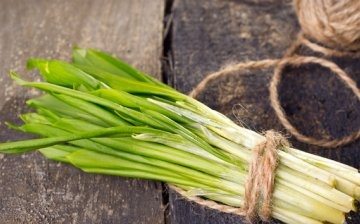
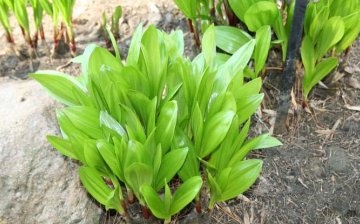

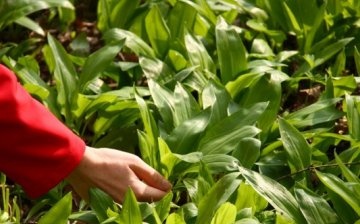
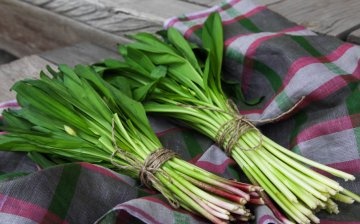
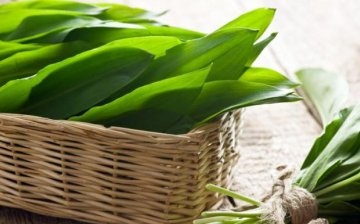






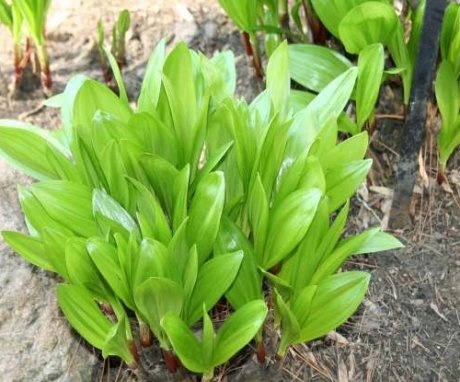
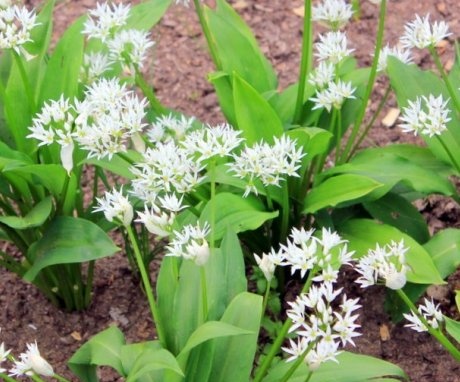

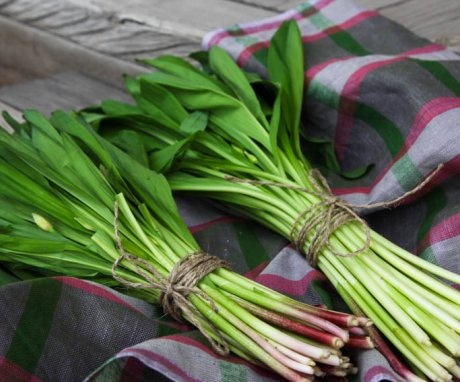
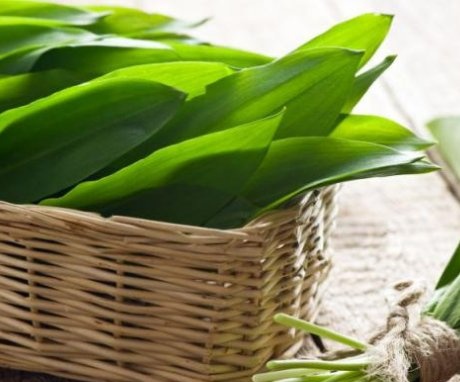
I cannot say that I am a fan of this plant. I will definitely never bother with it, then it is difficult to wash my hands and get rid of the smell. But I eat cooked by someone else's hands with pleasure, I like the wild plant more, although it is almost everywhere harvested semi-legally.
My dream is to grow wild garlic on the site. Because the purchase has become some kind of eternally overgrown, and I love her. Sowed before winter, and some are now in the refrigerator for stratification. I wonder if I can grow it or not. Unfortunately, I have nowhere to take the finished plant.